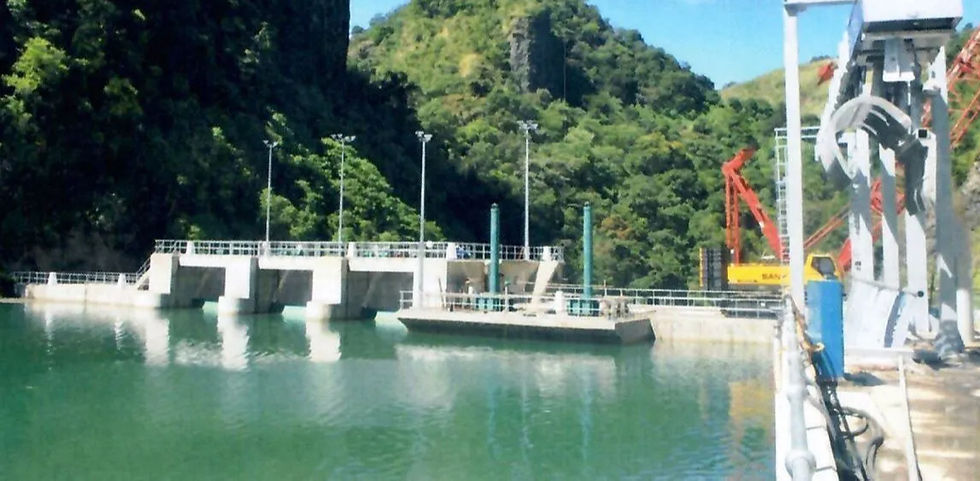Pacific island region's transition to renewable moving at snail's pace

By Mar-Vic Cagurangan
In the early stages of energy transition, the Pacific island nations’ investments in renewable sources have led to lower electricity production costs, but whether or not they are mirrored in the customers' power bills is another story.
A shift to green energy is often touted as the solution to exorbitant power rates, particularly in the fossil fuel-dependent region. However, a policy paper published in July by the Asian Development Bank’s Pacific Private Sector Development Initiative indicated that cost savings would not necessarily translate into immediate reductions to end-user tariffs.
The ADB study found that the cost reduction is concentrated in fuel savings since renewable generation in the Pacific typically displaces diesel.
The policy paper examined the impact of the fuel-to-renewable transition in Fiji, Palau, Papua New Guinea, Samoa, the Solomon Islands and Tonga.
"Fuel costs represented $0.02–$0.21 per kWh generated in the six utilities surveyed, so the cost savings generated by renewables will be greater for those with the highest fuel costs," states the paper titled “Powering the Pacific: The Cost Implications of Renewable Energy.”
However, the study found several factors that “mute the impact” of cost savings on the customers’ power bills.
“Since electricity tariffs are already below full-cost recovery levels for many Pacific utilities, any anticipated savings from renewable energy are effectively already rolled into the tariffs,” the policy paper said. “A characteristic of electric utilities in many Pacific countries is that they fail to recover their revenue requirements.”
The study suggested that any further reductions, ostensibly to accommodate the lower cost of renewable energy generation, would exacerbate the utilities’ financial predicament.
“While utilities and regulators generally aim to set tariffs that allow utilities to recover the entirety of their revenue requirements, policymakers can and do intervene, often requiring the utilities to shoulder the cost of subsidy programs, in some cases contrary to the tenets of state-owned enterprise legislation in the region,” the paper said.
Some utilities, such as the Palau Public Utilities Commission, receive government subsidies to bridge some or all of the gaps between the utility’s revenues and its actual costs.
Laure Darcy, one of the authors of the report, assured that "as renewable energy becomes a larger part of the energy mix, costs for consumers are expected to decrease, especially as the costs of battery storage systems fall."
Globally, the infrastructure price tags have decreased, particularly solar photovoltaics. The ADB paper noted that the dropping costs are reflected in the Pacific, where the total installed cost of solar PV systems fell from about $12,000/kW in 2008 to $3,000/kW in 2018.
Denzel Hankinson, a renewable energy specialist, said cutting electricity costs and improving supply reliability involve several factors other than just investment in renewable infrastructure.
"Utilities also need to follow commercial principles and improve operational efficiencies to curb high system losses,” said Hankinson, co-author of the report. “International experience has also shown that increasing competition in the energy sector can also reduce the cost to consumers."
Most utilities in the Pacific are state-owned monopolies.

While Pacific island nations have each set an ambitious goal to grow their renewable capacity by up to 100 percent, the region as a whole has been slow in advancing toward the common target, according to the policy paper.
The paper noted that the Pacific island region has increased its total renewable energy generation by only 1 percent as of 2021, falling behind the rest of the world. In contrast, Southeast Asia has increased its total renewable energy generation by 68 percent and the Caribbean region by 71 percent, slightly outpacing demand growth.
The ADB’s paper attributed the lag to a combination of factors including remoteness, high transition costs, weak regulatory frameworks and limited availability of land.
It noted that of the 14 developing economies in the region, only three had 40 percent or more of their total electricity produced by renewables in 2021.
Those with the largest share of renewable energy generation are Fiji, 60 percent; Samoa, close to 50 percent; and Papua New Guinea, 40 percent.

Recent solar investments in Palau and Tonga are expected to increase the contribution of renewables in those countries.
The paper noted that Fiji and PNG are also the largest electricity generators in the region, accounting for approximately 83 percent of the electricity produced across the region in 2021. Their hydroelectric plants—commissioned before 2012—accounted for up to 88 percent of their renewable energy output in 2015 and 2021.
“Most countries in the Pacific remain heavily reliant on imported fossil fuels to generate electricity,” states the paper. “The low penetration of renewable energy in most countries of the Pacific has meant that electricity costs remain highly sensitive to movements in oil prices."
Subscribe to
our digital
monthly edition





Comments